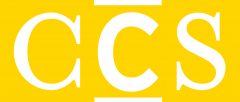Salary for Full-time Faculty
Salaries are determined annually, based on the faculty member’s performance and on salary policies established each year by the Board of Trustees. Department Chairs, at the Graduate and Undergraduate Deans’ discretion, may be consulted in making salary recommendations. The Deans compile a set of salary recommendations for the faculty in their division that are submitted to the President for consideration and approval. CCS is committed, within the constraints of its budget, to recognizing excellent faculty performance through salary adjustments. Poor performance may be recognized through low or, if appropriate, no salary increases.
Pay Periods
All full-time faculty positions are classified as salaried and exempt. Salaried staff is paid twice per month (semi-monthly/24 checks) on the 15th and last working day of the month.
For Adjunct Instructors, pay is disbursed on the 15th and last day of each month. Adjunct instructors receive six payroll deposits in the fall semester, eight pays in the winter semester, and four pays in the summer semester.
Hourly staff and work-study are paid biweekly (26 checks). When biweekly employees receive three pays within a calendar month, benefits are not deducted from the third payment of the month.
If the regular payday falls on a Saturday, Sunday, or holiday, paychecks will be issued on the last workday before the regular payday.
Employees may elect to be paid via direct deposit or Wisely debit card; physical checks are not issued. Pay cannot be processed until the appropriate Human Resources forms are completed. Faculty can view their payroll information by logging into Self-Service and clicking on the Employees Menu link. For questions about Payroll, please contact the Payroll Coordinator at 313-664-7478.
Online access to pay information is available through the Self-Service link on CCS’s Access Manager page.
Deductions
CCS will withhold deductions required by law and all voluntary deductions authorized by the employee. Deductions required by law are federal, state, and local income tax; Social Security tax; Medicare tax; state disability; and unemployment tax. These deductions are made automatically. In addition, the employee may authorize voluntary deductions for health insurance, a tax-deferred annuity plan, and reimbursement accounts. It is the policy of CCS not to make any salary deductions that are inconsistent with the requirements of federal or state wage/hour laws.
Direct Deposit Banking
All employees must have their paycheck automatically deposited in the bank(s) or credit union(s) of their choice or on the Wisely debit card. The College’s Direct Deposit policy can be found in the Policy Database.
Advances
CCS generally does not authorize pay advances. Exceptions may be made for emergency situations and only with the approval of the employee’s immediate supervisor and the Vice President for Administration and Finance.
